What is the treatment for PCOS and infertility?
Polycystic ovarian syndrome is a common cause of female infertility. The ovaries in these women contain multiple small cystic structures, or antral follicles, that are 2-9 mm in diameter.
The ovaries have a characteristic “polycystic” (many cysts) appearance on ultrasound
Ultrasound image of PCOS ovary at “PCO”
Bowel at “B”
For a more detailed general explanation of PCOS, see: Polycystic Ovarian Syndrome, PCOS
-
- Women with PCOS syndrome do not ovulate (release eggs) regularly and therefore have irregular menstrual cycles
- Therefore, treatment for infertility caused by PCOS is directed at getting the woman to ovulate
- Doctors call this “induction of ovulation”
What is induction of ovulation?
PCOS Fertility Treatment – Inducing Ovulation
Treatment Options
There are several possible ways to attempt ovulation induction in women with polycystic ovaries, including:
- Clomid, clomiphene citrate
- Metformin
- Clomid and metformin together
- Femara, letrozole
- Injectable gonadotropins
- IVF, In Vitro Fertilization
PCOS Pregnancy Statistics
- The age of the woman
- The type of PCOS meds used
- Whether the medication used is effective at stimulating ovulation in that woman
- Whether there are other infertility factors present in the couple
In general, successful treatment resulting in pregnancy is more likely to occur in the first 3 to 4 months of treatment. After that, the monthly success rate drops off considerably.
The approximate average monthly pregnancy success rate (female age under 35, normal sperm) for the major types of treatment used for PCOS are:
| Treatment for PCOS | Expected “Monthly” Success Rate |
|---|---|
| Metformin alone | About 1-2% |
| Clomid | 15% – if ovulating |
| Femara | 15% – if ovulating |
| Injectable gonadotropins | 20% |
| IVF, In vitro fertilization | 60% – at our IVF clinic |
A brief overview of each PCOS treatment option is below
For details see the pages that discuss each treatment option
Clomid
- The least complicated method is the use of Clomid tablets, also called Serophene, or clomiphene citrate
- Many will be able to get pregnant using clomiphene to induce ovulation
- Clomiphene is usually the first line of treatment
Details about Clomid for treatment of polycystic ovarian disease and infertility
Femara (Letrozole)
Some women that do not respond and ovulate with Clomid will respond well to letrozole. Other women that do ovulate with Clomid may never get pregnant on it, and could do better with letrozole.
Injectable Gonadotropins (FSH Hormones)
For women that do not ovulate with clomiphene, the “traditional” next step has been to use injectable gonadotropins. The woman takes daily shots of FSH hormone for about 7 to 15 days in order to stimulate mature follicle development.
Risks and Side Effects
- The injectable medications are expensive
- Beware of multiple birth risks with this treatment option – there are risks for triplets and higher order multiple pregnancies
- There are risks of ovarian hyperstimulation syndrome
- The daily injections and multiple trips to the office for monitoring are inconvenient
Injectables for PCOS treatment
IVF - In Vitro Fertilization
IVF clinics are not all the same – learn more about IVF pregnancy success rates
Success Rates
- In general, IVF success rates are excellent in cases with infertility caused by PCOS
- In our in vitro fertilization program we see PCOS pregnancy statistics of about 60% for a live birth rate (woman under age 35)
- Our IVF success rate statistics
We specialize in treating women with PCOS and have many IVF PCOS success stories
- We usually use a PCOS IVF protocol combining metformin, oral contraceptive pills, and the Lupron down-regulation stimulation protocol
- Recent advances in IVF technologies have resulted in the ability to maintain high success rates while controlling multiple pregnancy risks
- Blastocyst embryo transfer is a variant of standard IVF treatment that is useful in controlling multiple birth risks
Metformin
Oral medications such as metformin (brand name Glucophage) can be used to try to stimulate ovulation with PCOS. It can be used with or without Clomid.
Metformin is an “insulin sensitizing agent” primarily used to control diabetes.
Success Rates
Not many couples will get pregnant using metformin alone. However, some women will respond to metformin and clomiphene when they are used in combination.
Some will not ovulate even with the combination therapy and will need either injectable FSH medications, or IVF to have a baby.
Side Effects
Metformin has unpleasant gastrointestinal side effects such as diarrhea in about 25% of patients.
Metformin for PCOS and fertility treatment
Cost for Induction of Ovulation and PCOS Treatments
- The type and dose of medication required.
- The number of ultrasound and blood tests required to properly monitor the cycle.
- Sometimes artificial insemination will be recommended, which increases the chances for a pregnancy, as well as the cost.
- A Clomid cycle usually costs between $100 and about $1200, depending on what is done.
- A cycle with injectable gonadotropins usually costs between $1500 and $6000, depending on what is done and the doses of injectables needed to stimulate follicles to grow.











